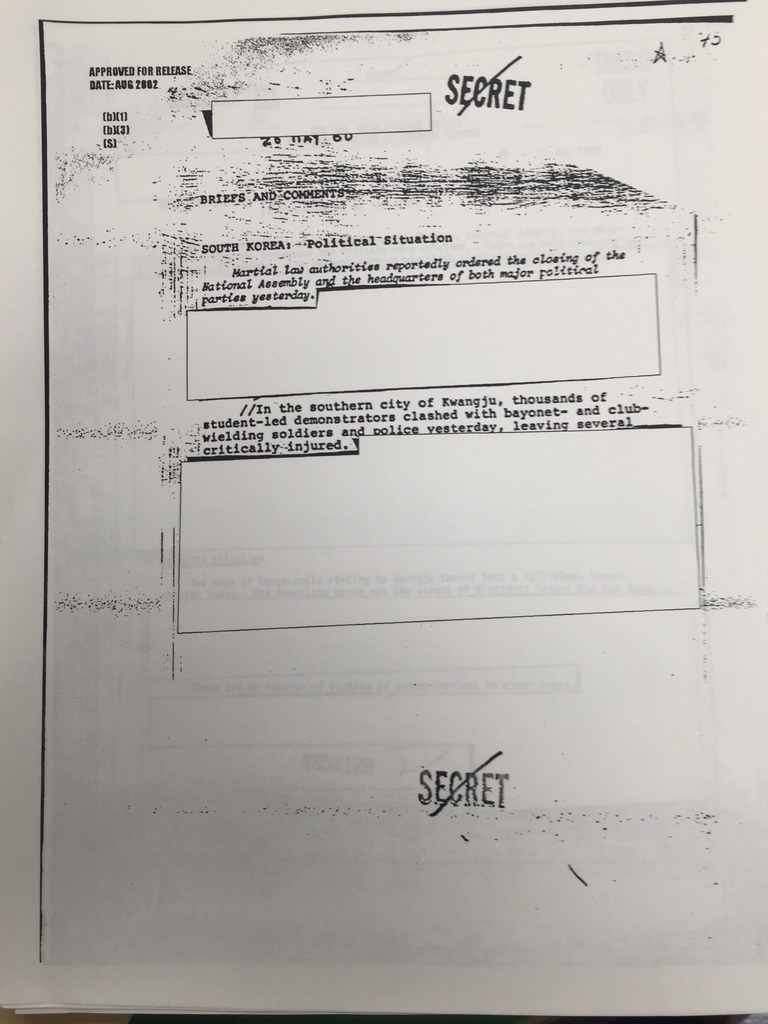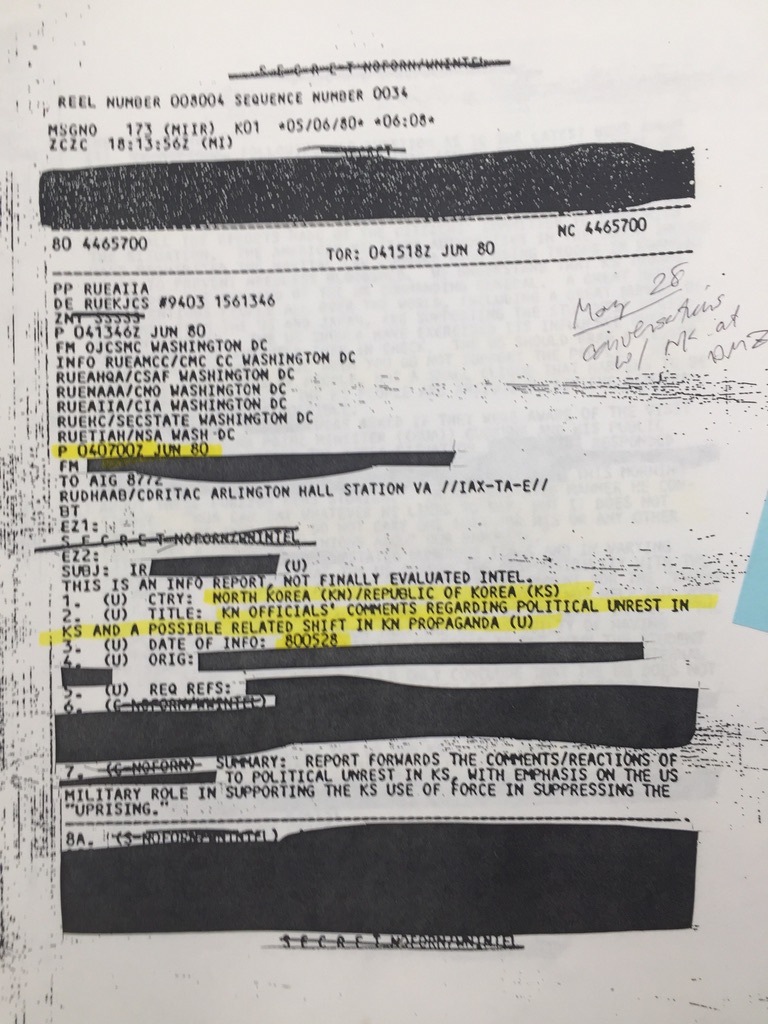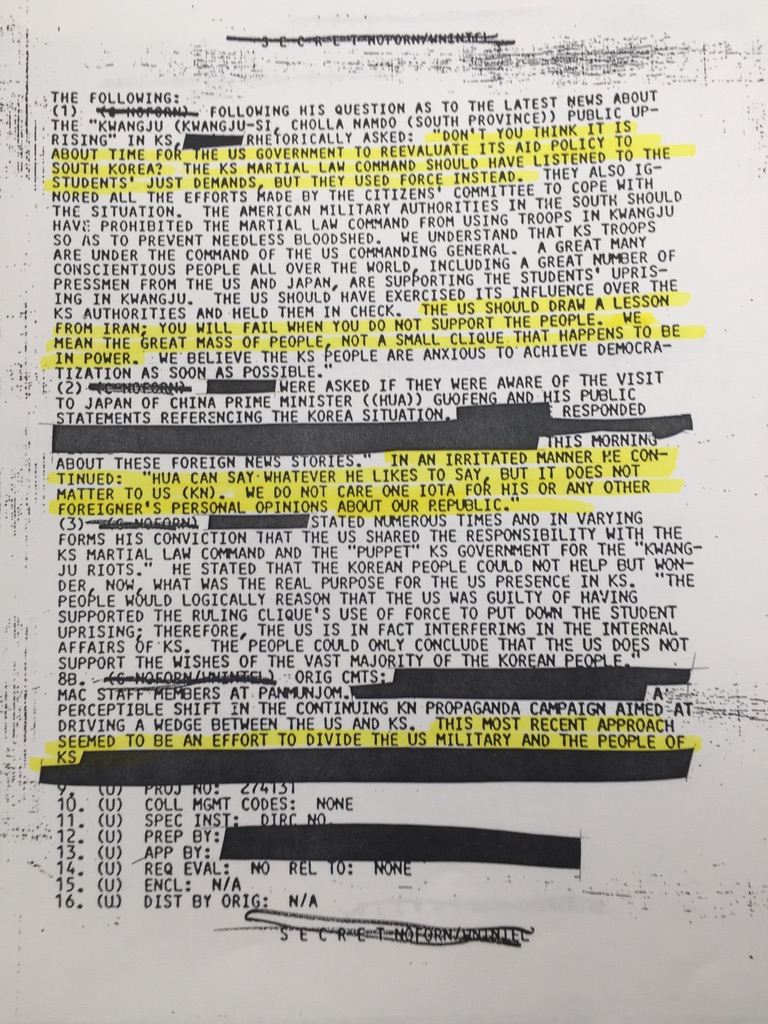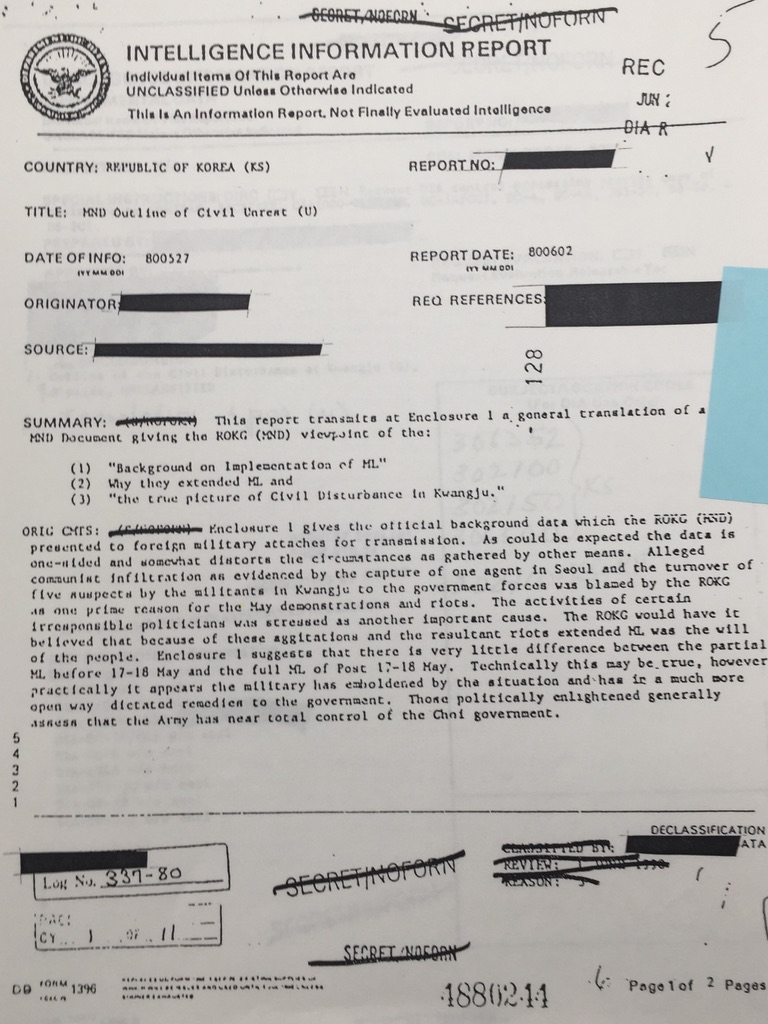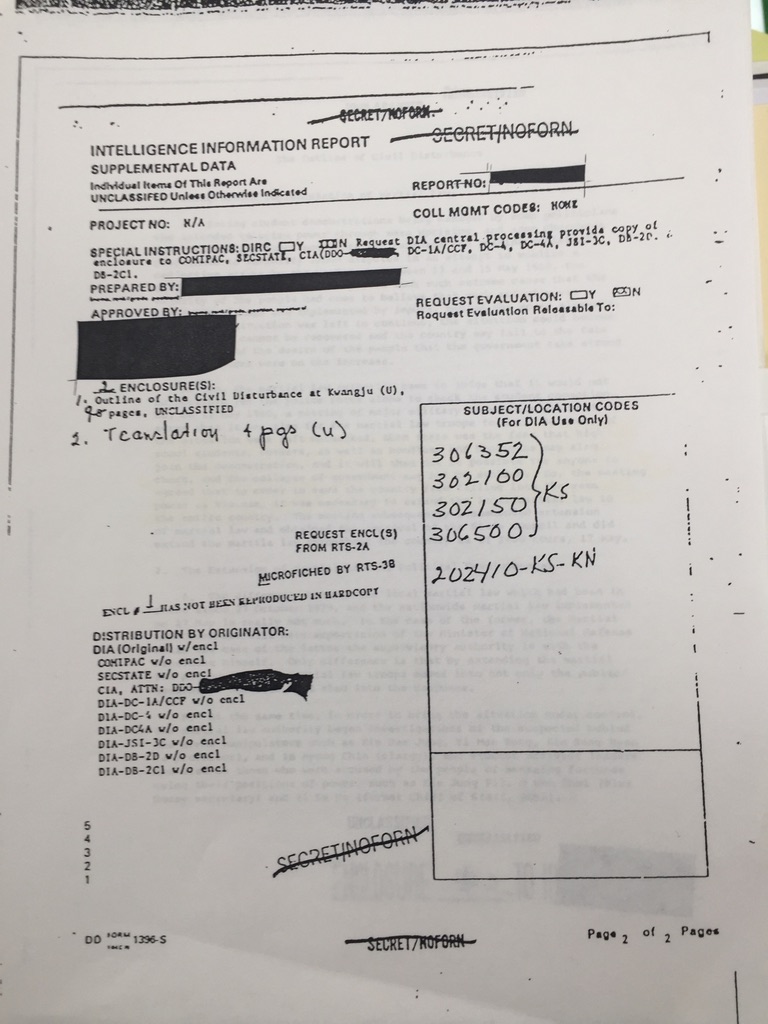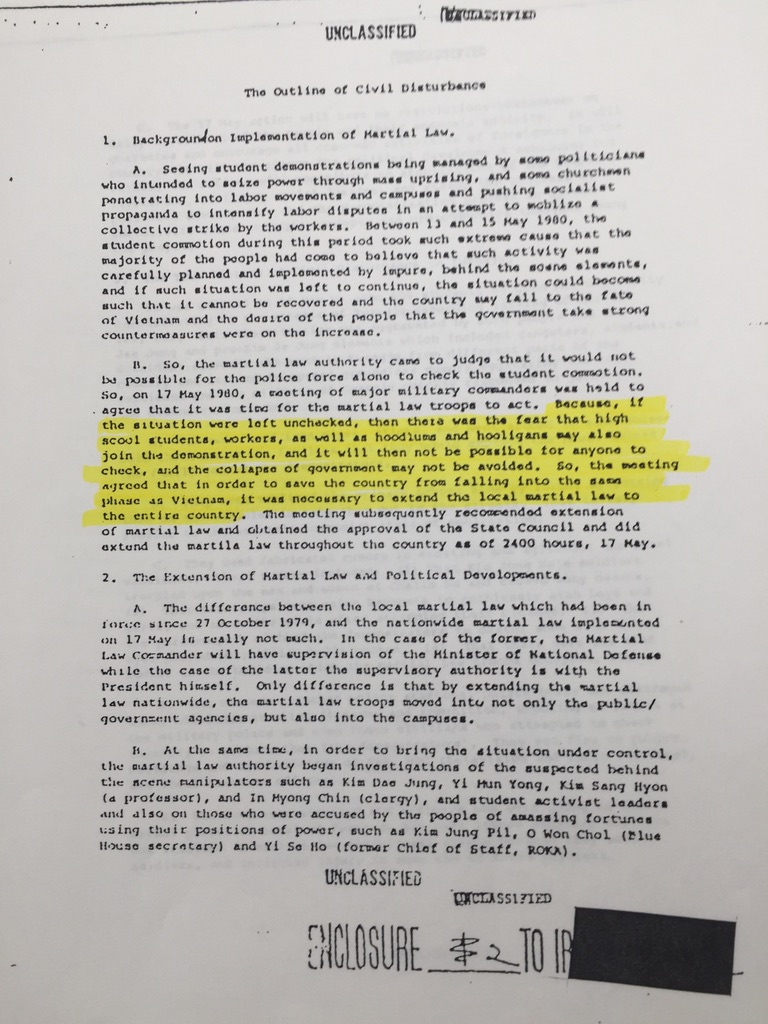This website will have two archives of my reporting where readers can read and download declassified documents and other material from my 45 years of reporting on South Korea and Japan. “Gwangju Declassified” will include most of the U.S. government documents on S0uth Korea I obtained between 1989 and 2003. New documents will be uploaded continuously. The second “DMZ Empire” archive will be populated over the next two years as I write and publish my next book.
To gain access to these files, please subscribe at my Patreon site for a basic price of $5 per month. Subscriptions costs go to maintaining the site and uploading and explaining new documents.
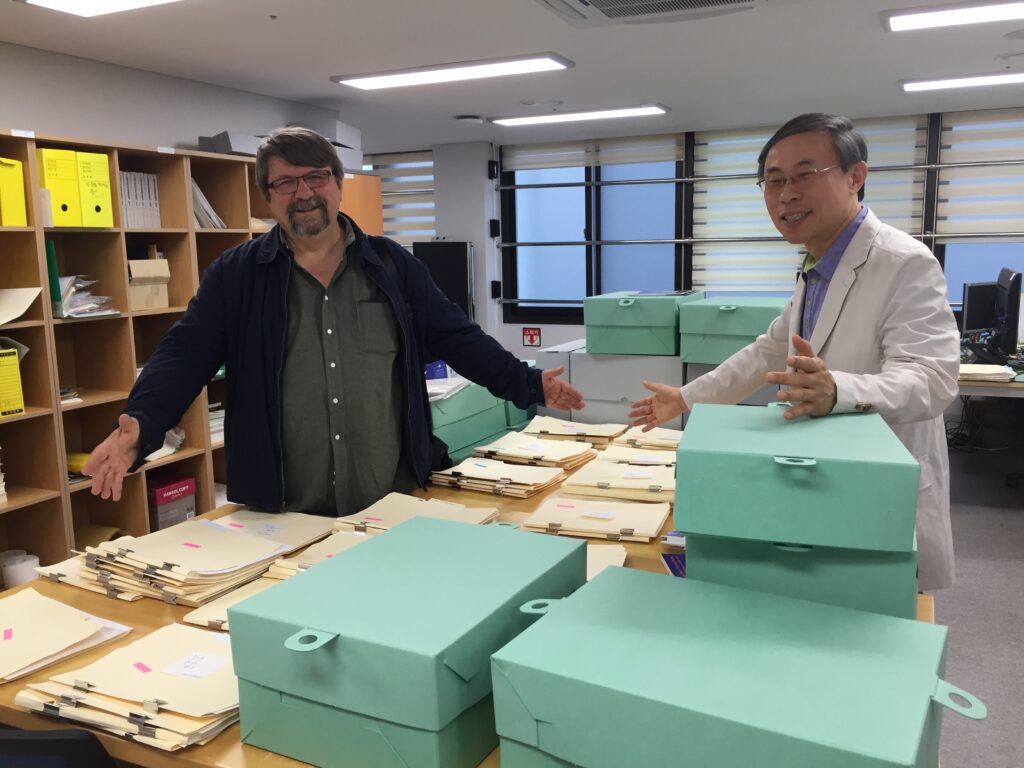
Gwangju Declassified
This is an online database of the 4,000 declassified US government documents on the US role in South Korea during the Gwangju Uprising of 1980. The original copies of the documents known in Korea as the “Cherokee File,” are permanently stored and available for research at Gwangju’s 5.18 Archives in South Korea. To view all of the FOIA documents I’ve posted, click “Gwangju Declassified” in the Categories section.
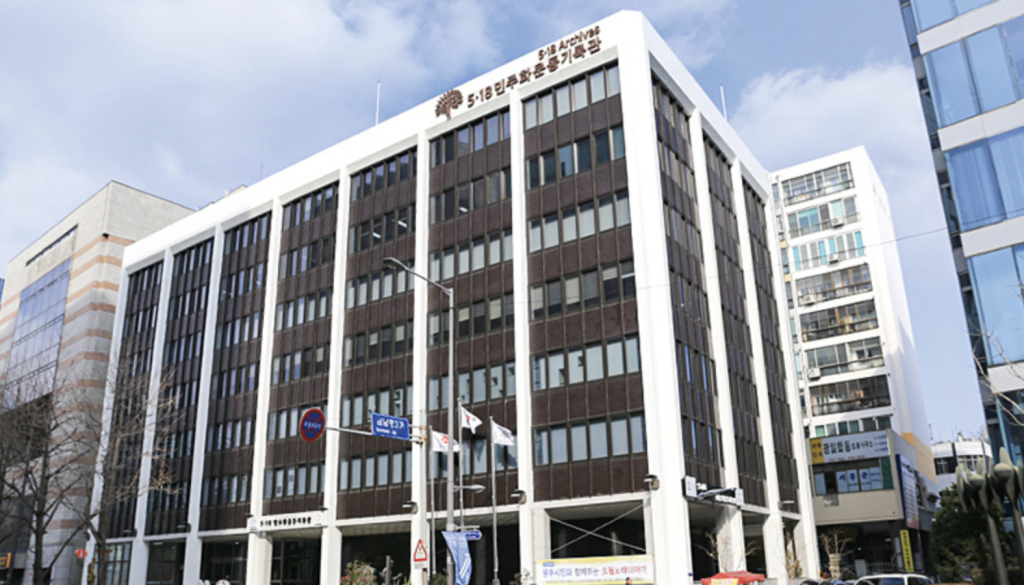
The first post in this database was published in 2011. The rest were published in 2020 to mark the 40th anniversary of the Gwangju Uprising of 1980. The titles correspond to their BOX and FILE numbers as stored in the archive in Gwangju (where they are available in Korean translation). We are posting each file as a link to its original post here, along with new articles and analyses of US intervention in Korea.
INTERVIEW WITH TIM SHORROCK ON THE CHEROKEE FILES. Posted by TBS/Seoul on May 27, 2020, 40 years to the day in 1980 when South Korean troops – with logistical support from the Carter administration and the Pentagon – invaded Gwangju to crush the rebellion.
KEY FOIA DOCUMENTS ON GWANGJU 5.18. This file includes many of the key documents first reported in my initial 1996 stories on the US role in South Korea in 1979 and 1980, published in The Journal of Commerce and Sisa Journal. These were obtained between 1996 and 2006. A few of them were fully declassified on that date as well.
KEY FOIA DOCUMENTS ON THE ASSASSINATION OF PARK CHUNG HEE. This file includes declassified documents from October 1979 and underscore US confusion and determination to maintain the status quo in South Korea following the Park assassination on October 26, 1979.
KEY CIA REPORTS ON GWANGJU, MAY 21-22, 1980. These are Central Intelligence Agency reports from May 21 and May 22, 1980, two of the most critical days of the Gwangju Uprising.
TIM SHORROCK FILES, AS LISTED IN THE GWANGJU 5.18 ARCHIVES
BOX 1/FILE 1: KWANGJU – US REPORTS. This file contains the day-to-day reports from the US Embassy to the State Department about the uprising (“riot”) in Gwangju, including the most detailed US explanations of what happened during the period from May 18 to May 27.
BOX 1/FILE 2: DOD-DIA REPORTS. This file contains Defense Intelligence Agency (DIA) reports to the Department of Defense (DOD) about the domestic situation inside South Korea from the October 26, 1979, assassination of Park Chung Hee, through the Gwangju Uprising of May 1980.
BOX 1, FILE 3: KWANGJU AFTERMATH/ARRESTS/CHUN VISIT. These documents report on Gwangju in the months after the military crushed the rebellion on May 27, 1980, and are primarily US embassy reports on the military trials of over 175 people arrested by the martial law authorities.
BOX 2/FILE 1: CHEROKEE FILES. This file contains important State Department documents, mostly written Ambassador Gleysteen, about the events leading up to and preceding the Park assassination as well as the events surrounding the coup within the military on December 12, 1979.
BOX 2/FILE 2: US INTERVENTION IN 1979 AND 1980. These documents are important in understanding the important role played by the United States in the events in South Korea dating from the Park assassination through the US acceptance of General Chun as South Korea’s leader in the fall of 1980. Some are copies of documents found in other files; they are collected here so researchers can understand the full scope of US intervention in the Korean political process, including at the diplomatic and military level.
BOX 2/FILE 3: US CONGRESSIONAL LETTER REFUSED BY ROK MOFA. July 1980 – These documents primarily describe back-and-forth communication between the US Embassy in Seoul and the South Korean Ministry of Foreign Affairs. MOFA refused to transmit to the Blue House a letter signed by 32 members of the US Congress. The key US official in Washington involved was Michael Armacost of the State Department.
